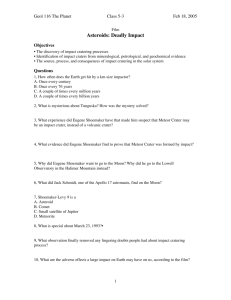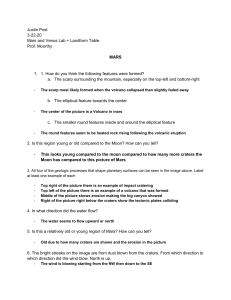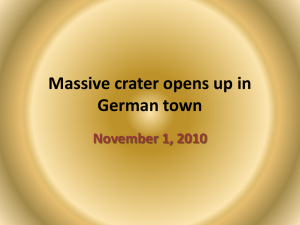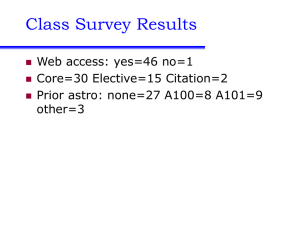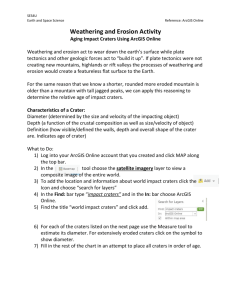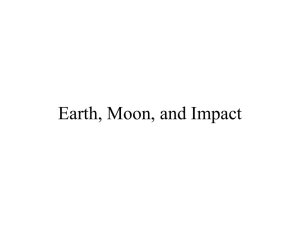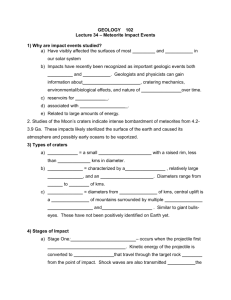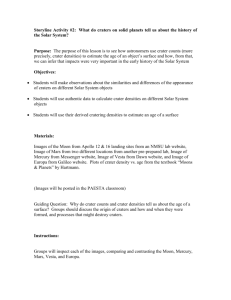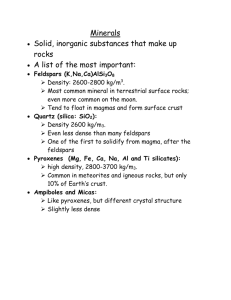part 1-impacts
advertisement
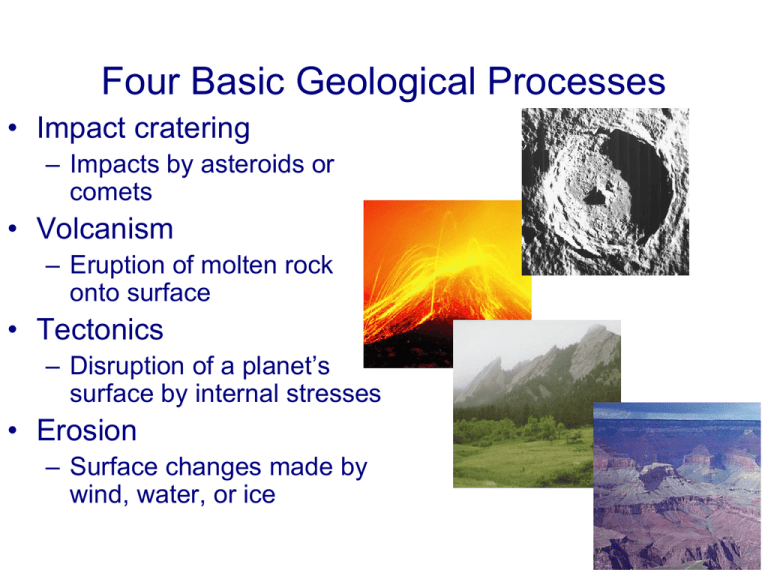
Four Basic Geological Processes • Impact cratering – Impacts by asteroids or comets • Volcanism – Eruption of molten rock onto surface • Tectonics – Disruption of a planet’s surface by internal stresses • Erosion – Surface changes made by wind, water, or ice Impact Cratering High kinetic energy of impacting object Excavation Heat Shape round for all impact directions Crater Morphology: • Impactor in the inner solar system can have 10s of km/sec relative velocity • May vaporize or liquefy a significant amount of the target for a large impactor • “Simple” craters are bowl shaped • “Complex” craters are flatter, and have a central uplift or peak Impact Craters Tycho (Moon) Meteor Crater (Arizona) The Impact Process 1. Detonation - shockwave propagates through target, projectile vaporized 2. Excavation - target is heated, vaporized, liquified, solid material is ejected (possibly above escape velocity!) 3. Rebound - in larger craters, the target may “bounce back” viscously, forming a central uplift 4. Relaxation - crater walls subside, melt pools in the crater Few Hundred Confirmed Craters on Earth Meteor Crater Manicouigan Crater Moon Near Side Moon Far Side Lunar Highlands Mare Imbrium Lunar Mare Crater modification Mars Rampart Crater 3 Venus Craters 1 Ganymede Crater Chain Shoemaker-Levy 9 SL-9 Aftermath Hyperion
